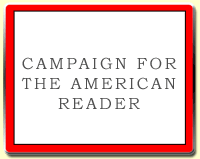Adapting my “Haunted Scranton” series (Hard Spell, Evil Dark, and Known Devil), or any part thereof, as a movie would present several challenges. The biggest of these would be getting the tone right. Although the books contain moments of humor (at least, I hope they do), the overall tone is deadly serious. In the alternate universe where the series is set, all the monsters from your nightmares are real: vampires, werewolves, witches, demons, ghouls – the whole crew. It’s true, not all of them act like monsters, but the danger is ever-present. Being a cop in a world like that, especially a cop like Stan Markowski, who specializes in supernatural crimes, would be stressful, indeed. Some years back, there was a short-lived TV series called Special Unit 2 that had cops dealing with supernaturals – but it tipped the balance in favor of farce much too often, in my opinion. On the other hand, True Blood mostly gets the attitude right, but it lacks the police procedural element that is central to my books.Learn more the book and author at Justin Gustainis' website.
And, of course, you’d have to shoot the exteriors in Scranton. The city is as much a character in my books as any of the humans (or non-humans, for that matter).
If some Hollywood producer ever had the good taste to adapt my novels into a series of movies, these are the casting recommendations I’d make:
Stan Markowski -- the late Jack Webb was sort of the inspiration for Stan, but the character of Joe Friday is utterly lacking in both humor and a sense of irony. That’s not Stan. Karl Malden, in his Streets of San Francisco days, would have been pretty good, too. Among working actors, I’d pick James Spader. He would never have seemed right to me for the role until I saw him this season in The Blacklist. The way he approaches the character of “Red” Reddington tells me he’d be great as Stan.
Karl Renfer – casting Stan’s vampire partner (who doesn’t start out the series as undead) is tricky. Fifteen years ago, Christian Slater would have been perfect. Since he’s too old, I’d be inclined to go with a clean shaven Joe Manganiello, who plays Alcide in True Blood.
Christine Markowski – Stan’s vampire daughter is a relatively small, but crucial role. I’d give it to Ellen Page, who received an Academy Award nomination for Juno.
Rachel Procter – the role of the police department’s consulting witch would be well-filled by Kerri Russell. She’s been doing some good work as a Russian undercover operative in The Americans.
Finally, the role of Stan’s hamster, Quincey should be played by my hamster Max.
The Page 69 Test: Known Devil.
--Marshal Zeringue











